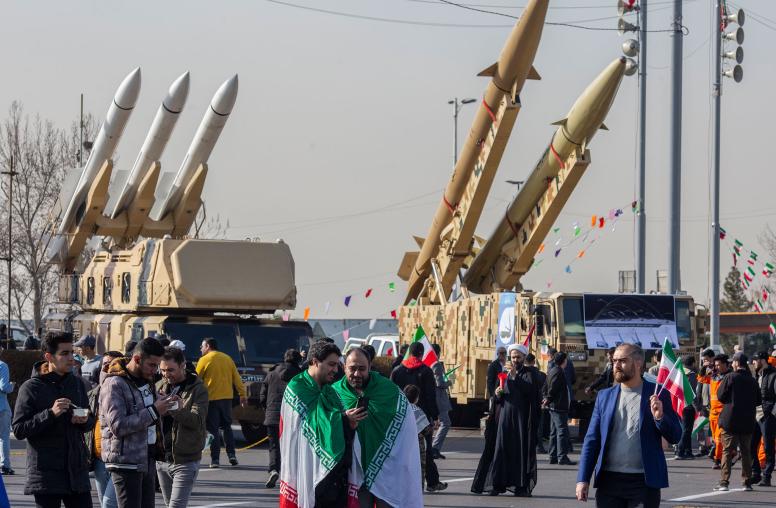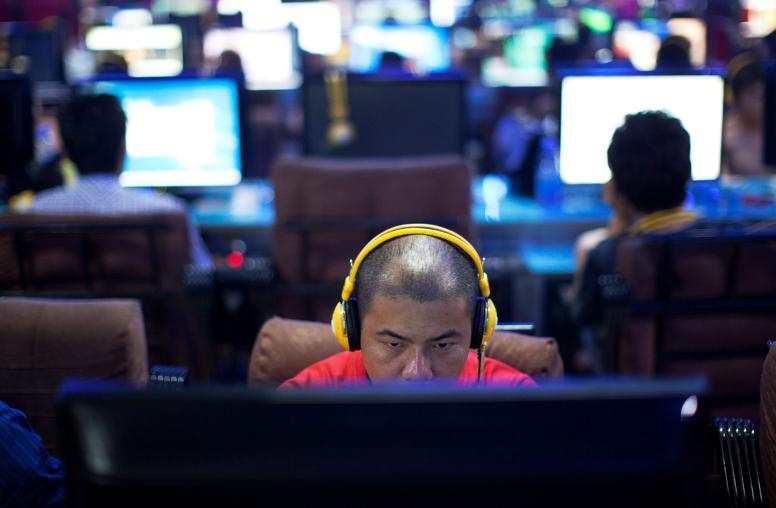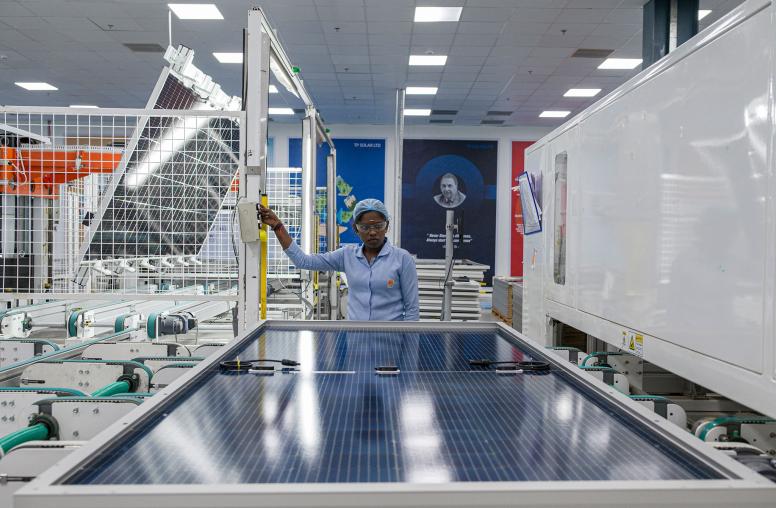Beijing and the Balloon: The Unbearable Lightness of Being China
What the balloon incident reveals about the challenges of dealing with an ambitious rising power still figuring out how to act on the global stage.
On February 2, a high-altitude air balloon was sighted over Montana and over the following days the focal point of conversation for people across the United States became the white airship aloft 60,000 feet above the earth. Inquiring minds wanted to know what it was, what it was doing and from whence it came. While the incident ended on February 4, when a U.S. Air Force fighter shot it down just off the coast of South Carolina, questions persisted as authorities went about salvaging the debris that fell into the shallow waters of the Atlantic Ocean.

As of this writing, not all of the debris has been recovered or analyzed, but we do have persuasive preliminary answers to the questions raised above. The flying object appeared to have been a Chinese military air balloon conducting surveillance over the United States, which continuously tracked it after being launched earlier in January from Hainan Island.
One question, however, remains unanswered: Why did the balloon enter United States airspace when it did and then hover in U.S. and Canadian airspace for a total of eight days? The answer is important because the balloon appeared over the continental United States on the eve of the departure of Secretary of State Antony Blinken to Beijing and prompted the Biden administration to decide to indefinitely postpone the trip. Whether the trajectory of the airship was purposeful, the doings of a rogue actor or accidental is important to discerning Beijing’s disposition toward Washington in the aftermath of the 20th Chinese Communist Party (CCP) congress of October 2022. Now that Xi Jinping has re-formalized his status as supreme leader of the CCP and officially launched his third term as China’s most powerful leader, what are his intentions vis-à-vis the United States?
An Intentional Act?
Many observers’ immediate assumption was that the balloon was adhering to its intended course for the purpose of collecting intelligence about the United States. The first public sighting by ordinary Americans was on February 2 when the airship was flying over Montana, where many assumed that it was collecting photographic and signals intelligence about missile sites and other sensitive military facilities. This assessment is entirely plausible for two reasons. First, China perceives the United States as its most powerful and dangerous potential adversary. Second, China’s People’s Liberation Army (PLA) runs a significant global balloon surveillance program. In recent years, Beijing has dispatched numerous balloons to conduct high-altitude missions around the world, including to North America and South America.
While the above explanation is highly persuasive the most puzzling aspect concerns timing. Beijing exhibited a discernible eagerness to welcome a U.S. secretary of state to China for the first time since 2018. Why? It appears that Beijing is keen to bolster bilateral relations, which have in recent years have been at their lowest ebb in many decades, to help jump start China’s sputtering economy coming out a zero-COVID convalescence. If this is so, then the last thing Beijing would want to do is sabotage the visit.
Speaking of sabotage, how likely is it that someone or some entity would have the desire and the ability to act upon desire?
An Act of Sabotage?
A second possible explanation is that a constituency in China is firmly opposed to Xi’s desire to improve relations with the United States and is actively seeking to undermine or sabotage this initiative. At first blush, this might seem highly implausible since there is a pronounced tendency to perceive China under communist rule as a unitary rational actor. Certainly, the CCP, as an orthodox Leninist party, emphasizes strong centralized control and strict party disciple. Yet, while the CCP seeks to completely dominate the polity and exert absolute control over policymaking and policy implementation, China is simply too large and Chinese bureaucracies too vast for party leaders to be able to exercise total policy control. The CCP itself is enormous with more than 95 million members. To be clear, I am not saying that Xi and his colleagues on the Politburo Standing Committee — the body at the apex of political power — do not wield unrivaled power and influence; rather, I am saying that they find it extremely difficult if not impossible to exert total control in policy implementation. In short, China’s party-military-state system does not function flawlessly.
China’s military is a distinct and insulated bureaucracy — aloof in many ways from the rest of the Chinese party-state. Moreover, the PLA appears to have functioned over time with considerable autonomy and has been characterized as “a state within a state.” Indeed, some observers have argued that China’s military at times has operated as a rogue actor. That said, CCP leaders have tended to be extremely focused on keeping firm control of the armed forces and retaining the support of China’s men and women in uniform. Yet, over the years military actions have occurred that raise serious questions about the degree of CCP control of the PLA.
One such episode in U.S.-China relations involving the PLA that comes to mind occurred a decade ago. In January 2011, then Secretary of Defense Bob Gates was visiting China when one of the PLA Air Force’s most advanced aircraft prototypes, the J-20 stealth fighter, conducted a test flight. When Secretary Gates asked President Hu Jintao face-to-face about the episode, the Chinese leader expressed surprise. Was Hu’s response feigned?
On the one hand, it may be hard to believe as China’s commander-in-chief, by virtue of his concurrent post as chair of the Central Military Commission, that Hu would not be aware of this event. On the other hand, however, is it conceivable that while he was almost certainly aware of the J-20 program and that test flights were ongoing, Hu was not aware of the test schedule or informed on the timing of specific test flights. The question remains: Was this an attempt by the PLA to sabotage China’s relationship with the United States? The answer continues to be far from clear both in the J-20 incident of 2011 and the surveillance balloon episode of 2023.
An Accidental Act?
A third possible explanation is that the balloon’s intrusion into U.S. airspace was a mistake. Indeed, a journalist at a February 3 press conference in Beijing inquired about “a Chinese unmanned airship … spotted in U.S. airspace.” The reporter asked: “Do you have any comment?” In response, a Ministry of Foreign Affairs (MFA) spokesperson stated that the balloon had “limited self-steering capability [and had] … deviated far from its planned course. The Chinese side regrets the unintended entry of the airship into U.S. airspace due to force majeure.” It is possible that the balloon was blown well off course when it approached U.S. airspace. Yet, there was no effort to promptly exit U.S. airspace even after the operator had regained control. According to media reports, the Pentagon, which was closely monitoring the balloon, said it was not flying erratically but being maneuvered by its controller across vast swathes of the United States.
Although power and authority are highly centralized and concentrated in the hands of a small number of individuals at the very top, the number of actors in Chinese foreign and security policies have proliferated dramatically in recent decades. Control and coordination are challenging for all bureaucratic systems and contemporary China confronts these same challenges. Yet, Xi and his Politburo Standing Committee colleagues face a situation exacerbated by a supersized and sprawling set of bureaucracies beset by extreme stovepiping. As noted above, China’s military is almost a stand-alone bureaucratic entity.
The 2023 balloon incident brings to mind Beijing’s 2007 destruction of a Chinese weather satellite in an orbit some 500 miles above the earth. The operation, widely described as an anti-satellite (ASAT) missile test, produced a large amount of man-made space debris. In both 2007 and 2023, China failed to get out in front of the story and did not make an official statement until after the episode was international news. But perhaps Beijing is on a learning curve: in 2007 it took the Foreign Ministry weeks to make a statement while in 2023, an MFA spokesperson issued a statement in less than 24 hours.
Aside from the likely coordination disconnect and absence of information sharing between the PLA and the MFA, China’s surveillance balloon program, just like China’s satellite program may not be managed exclusively by the PLA. Other actors are almost certainly involved, notably Chinese commercial firms and academic institutions. Moreover, while in the case of the 2007 ASAT test, no bureaucrat or scientist could reasonably expect that this outer space spectacle would go unnoticed, it is conceivable in 2023 that Chinese officials and scientists could have assumed that this surveillance balloon overflight could very easily go unnoticed based upon Washington’s apparent non-reactions to earlier balloon episodes. We know that other surveillance balloons have entered U.S. airspace but do not appear to have been reported to the White House and/or made public.
Final Thoughts
The surveillance balloon incident exposes the unbearable lightness of being China: the upward pull of stratospheric ambitions counterbalanced by the imperfect downward push of centralized command chains while pursuing the chimera of total control despite poor coordination mechanisms. Based upon the ignominious and simultaneous deflation of Beijing’s balloon and ego, Xi and his fellow top echelon political-military leaders are struggling with how to navigate the Chinese airship of state on a high-altitude course to attain the lofty goal of mature global power status. None of the three possible explanations explored above, including the most plausible one, error, are reassuring for the United States or other countries.



